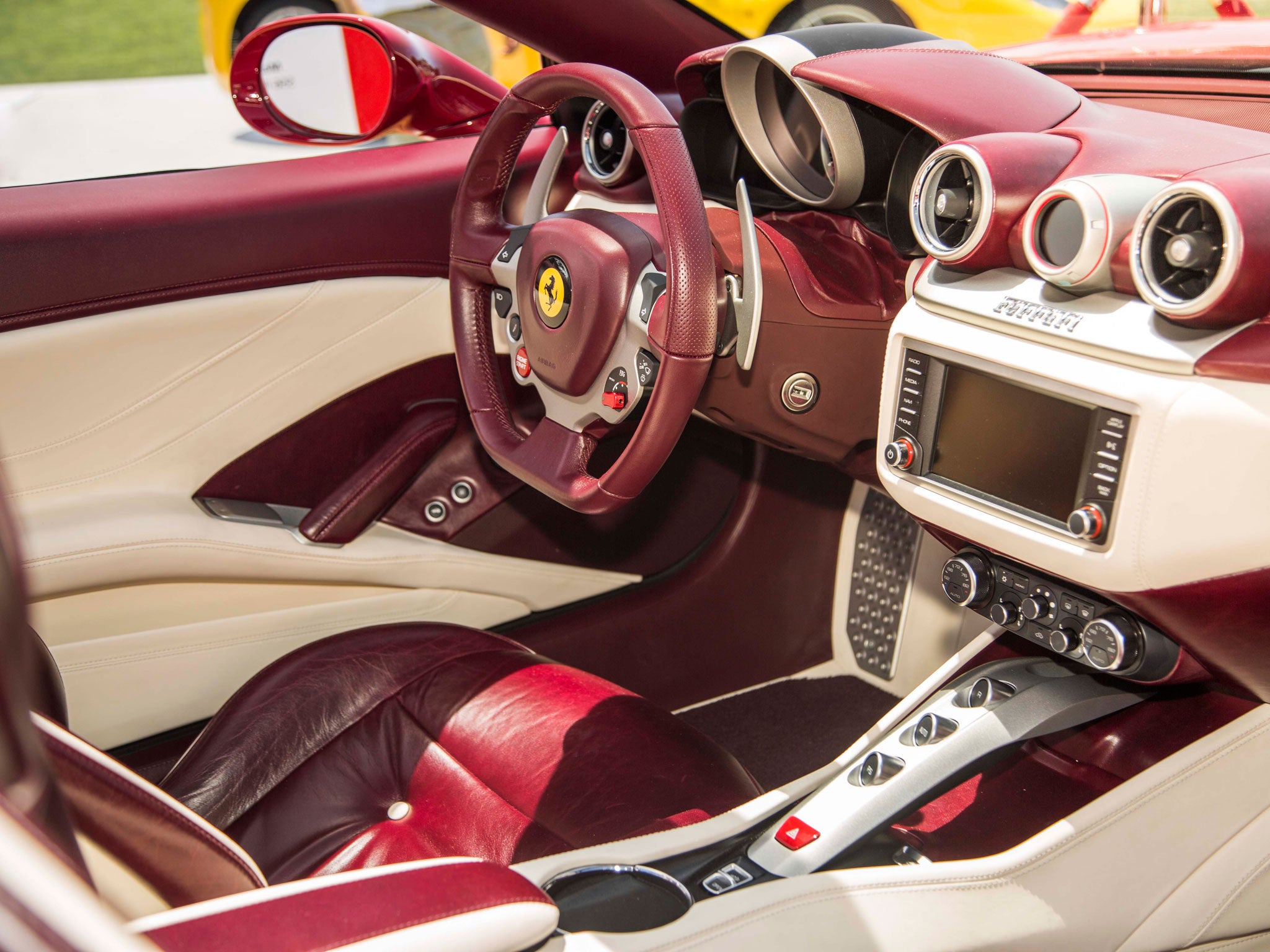Inside the home of Ferrari: The pristine Maranello factory produces the last word in customised luxury
As a Ferrari becomes the most expensive car ever sold at auction, Oscar Quine visits the marque's HQ and finds out why even such wondrous machines need pimping

The gigantic complex that is the Ferrari factory in Maranello, northern Italy, is built on an L-shaped plot of land and comprises the paint shop, the assembly areas, and, of course, the company ristorante. On a sunny day, workers go about their business like clockwork, scooting from A to B down wide, straight avenues lined with plane trees while riding bikes painted rosso corsa (Ferrari red in layman's terms) and emblazoned with the company's prancing horse logo. The smell of hot tarmac hangs in the air.
Everything is laid out so neatly that the place could have been built from Lego by a particularly precision-minded child. In fact, some of the world's finest architects are behind the buildings here. The wind tunnel was designed by Renzo Piano, creator of the Shard. These aesthetic standards give away something of the factory's dual role. It is where each and every one of the world-famous cars is designed and constructed, but it is also built to be customer-facing. Welcome to the home of the Ferrari "experience", a process whose value is clear from the marque's continuing domination of the dream-car buyer's imagination, with a 1957 Ferrari having earlier this month become the most expensive car ever sold at auction, going for $36m.
Hidden away in one of the buildings is a room not dissimilar to a Bond villain's lair. It is windowless, sumptuously lit and done out in varnished woods and cool stainless steel. Draped over the worktops that line the sides of the room are rolls of cashmere-soft cotton and bound sample books of the finest leathers in any shade one could dream of. This is where you come if just having a Ferrari isn't enough. Since 2012, the company has offered the "one-off" customisation service. Think Pimp My Ride – then append a zero or three to the price tag. "We can develop materials and paint colours from scratch," says Andrea Bassi, the head of Ferrari's personalisation unit. "We can even change the shape of the bodywork. Just as long as you respect the Ferrari branding."
A sample of requests include a customer who wanted their car design to match that of their yacht. Another required bullet-proof upholstery. A third wanted styling inspired by his favourite pastime – the sport of polo. This is a service that only around one per cent of Ferrari customers will use every year. The average spend is 30 per cent of the value of the car – but a redesign that matches the price tag is not unheard of. "There is no limit," says Bassi coyly, declining to divulge the most expensive project he has worked on.
In the truest sense of the word, Ferrari design is a slightly vulgar thing. The curved lines and plunging holes that set it apart from that of a Porsche or a Maserati are said to be intended to invoke the body of a naked woman. This – or the bank balance needed to afford one – may explain the association of the car with middle-aged men. But in launching the California T – with a price tag of "just" £150,0000 – Ferrari hope to broaden its customer base. Or, as Bassi terms it, the "family".
In trying to grasp the psychology of a person who will part with a quarter of a million pounds for a car and then the same again to redesign it, Bassi says it is crucial to understand this notion. "Interaction with the customer is a very rich experience," he says. "From my point of view, the real reason to buy for the customer is the experience, and not the car. Being part of the Ferrari family, coming here several times to design the car, working with the team."
That entire process will usually take around seven months. Once the client has tweaked to his or her heart's content, the car can begin to take shape on the on-site assembly line. Here, in a vast glass-walled hangar, the metal skeletons of car chassis are lifted from work-station to work- station, hanging in the air above the workers' heads. Each car travels with a clipboard that outlines any special adjustments. To one side of the factory floor, a team of 40 upholsterers work on the interiors. Materials are all dealt with by hand – working with lasers runs the risk of burning the more delicate fabrics. On the work surface, a plastic box is piled high with leather-cut Ferrari horses. Employees call this building the "cathedral".
In a consumer world ever-more orientated around the notions of the "experiential" and "added value", the upper echelons are not immune. The old sales adage rings true: you don't sell the sausage, you sell the sizzle. Which explains the pristine nature of the Maranello factory.
Here, in Bassi's atelier suite, among sheafs of animal skin and pictures of cars past that inspire idolatry in a certain kind of person, is where new customers are inducted into the Ferrari family. Baptism, perhaps, by rosso corsa.
Subscribe to Independent Premium to bookmark this article
Want to bookmark your favourite articles and stories to read or reference later? Start your Independent Premium subscription today.

Join our commenting forum
Join thought-provoking conversations, follow other Independent readers and see their replies